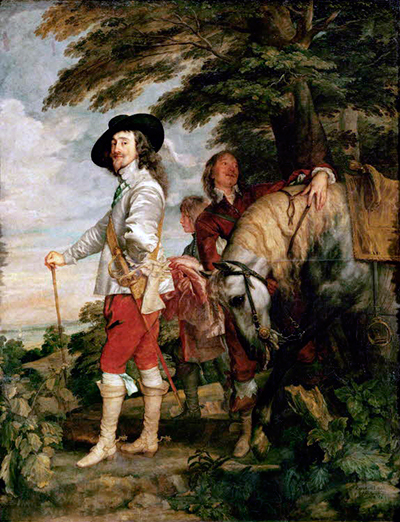 Buy Art Prints Now
Buy Art Prints Nowfrom Amazon
* As an Amazon Associate, and partner with Google Adsense and Ezoic, I earn from qualifying purchases.
Anthony van Dyck produced some of the finest equestrian portraits in the history of art
This particular example features Charles I on a hunt as a way of catching the normal everyday life of the king of England. This complex painting features a combination of landscape art in the background along with the resplendent attire of the king in the foreground. Additionally there is his bold, confident pose as well as the equestrian portrait itself.
Many equestrian portraits placed the subject on horseback in order to provide a feeling of strength and power but in this case the artist chooses to place Charles I alongside his horse as if to give a feeling of being much like the common man carrying out the same sorts of hobbies and pastimes that everyone and anyone would be doing.
Art historians studied the locations in which the monarch would have gone on hunts and most evidence points to this being on the south coast of England, with the scene in the background most likely to be a sighting of the Isle of Wight from across the River Solent. It appears that the painting was taken during a resting period of the march, where the King's servants are caring for the tired horse.
Artist Van Dyck chooses to place his subject with a large, darkly coloured hat that serves two purposes. Firstly it adds a touch of class to this civilian attire but also it provides a barrier between the King's light skin tones and the equally light sky that sits close by. In order to avoid losing his face into the background the artist sensibly appends the darker tones in between.
The right hand side of the painting is much darker throughout, helping the focus to remain fixed on the monarch. As he poses casually, the artist ensured that his servents were shorter and less glamorous. The horse looks drained by the day's activities and takes a well earned rest. The tree sitting in the background is used in order for the lighting to contrast naturally across the scene.



